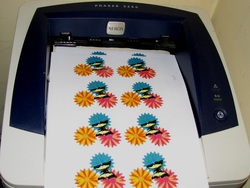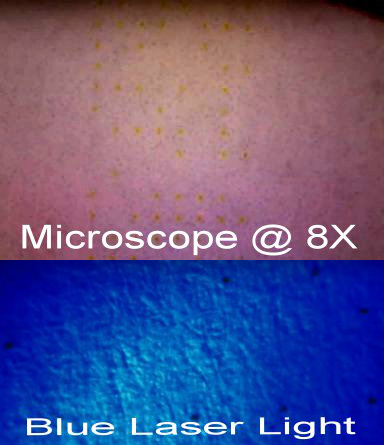
Is it possible for a simple home color computer printer or copier to be a tool to invade our privacy? The answer is yes and it has been occurring since the 1980’s! Here is the way in which I have determined that it happened and why the practice is not on everyone’s mind.
In the late 1980’s and early 1990’s laser color copiers were becoming not only popular, but they were providing clear and very accurate photo copies. The government, particularly the treasury department was concerned that it would become easy for counterfeiters to locate linen paper and produce good quality money. So, they either asked, or more likely told manufactures to come up with a way to identify every printer that they made with a code to track the manufacturer, date of the print, and by extension, who purchased that machine. And so the system was developed to place very tiny yellow dots in a code that could be read perhaps by an overlay or an algorithm. But the real question is that once the threat of phony money passed, why would the government continue wanting to track information on us? Because, that is what they do best! Perhaps if someone printed and distributed “dangerous” material or leaflets they could be tracked. But why invade the privacy of the rest of us when there is no law or legal basis to do so?
So, be aware that big brother is watching and if you by a copier or laser printer with a credit card, you are easy to track if the images produced go anywhere in the public space. One experiment that I have yet to try is to find a color laser print online and see if that contains the yellow dot signature. Even with cash, the purchase is bar coded and theoretically could be tracked. One thing that we can all do is email the printer manufacturers and tell them we will stop buying their merchandise and spread the word. Or, just print everything with black printers only.
The Electronic Forum Foundation (Here) is running an experiment to get as many readers to submit samples to decode and identify which printers are coded. I inadvertently referred to them in the video as the Freedom Foundation because to me they are trying to protect our digital freedom. But the link will be clear.
Below are the photographs, video, and a link to my video covering the conversion of a webcam to a microscope (Link Here). (For the video, the webcam was defocused by about two turns to move the lens farther away from the image element). Enjoy and please comment as always.


 RSS Feed
RSS Feed
